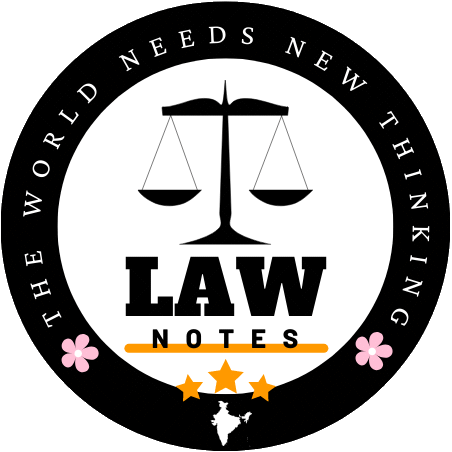Doctrine of Colourable Legislation
The Doctrine of Colourable Legislation is derived from a latin maxim “Quando aliquid prohibetur ex directo, prohibetur et per obliquum” that says: What cannot be done directly, should also not be done indirectly. This doctrine has been used in the cases to decide questions of capacity/ competency to enact a law when a lawmaking body violates its given power and enact after something in an indirect way which it can’t do in a direct way.
This concept is a technique for determining if laws passed by various legislatures are within their legislative authority. As a result, it is a tool for enforcing judicial accountability and the separation of powers. In essence, this philosophy holds that anything that is forbidden directly is also forbidden indirectly. This is meant to prevent the legislature from directly doing something that has been forbidden and then doing it covertly or indirectly.
The Supreme Court in the case of K.C Gajapati Narayan Deo vs. State of Orissa 1953 AIR 375 has well explained the meaning and scope of the doctrine as the court stated that;

The question of whether the Legislature in a particular case has or has not violated the law’s subject matter or method of enactment in respect to the statute’s subject matter or method of enactment arises if the constitution of a State distributes the legislative powers among various bodies, which must act within their respective spheres marked out by the constitution in specific legislative entries. Such violations may be overt, obvious, or direct, but they may also be subtle, covert, or indirect. In court rulings, the term “colourable legislation” has been used to describe the latter group of situations.
In India, the judiciary was given the authority to uphold this philosophy while also determining the legislative authority of the federal and state governments. The following is Jus Alladi Krishnaswami Ayyar’s declaration in the Constituent Assembly regarding the principle of color-blind legislation.
It is a widely recognized principle of constitutional law that when a Legislature, whether it be the Parliament at the federal level or a provincial legislature, is given the authority to pass a law regarding a specific subject matter under the terms of the Constitution, it is not the responsibility of the court to review the Act of the legislature. Of course, the Court may declare the legislation to be illegal or ultra vires if it is a colorable device, a scheme to go beyond the scope of the legislative power, or if it uses language from private law.
In fact, even Jawaharlal Nehru restrained Parliament’s unbridled power while maintaining administrative incomparability, saying: “Parliament fixes either the compensation itself or the principles governing that compensation and they should not be challenged except for one reason, where in fact there has been a gross abuse of the law, where in fact there has been a fraud on the Constitution.”
Limitations Of The Applicability Of The Doctrine
There are sure impediments on the applicability of this Doctrine. They are given below:
- It isn’t pertinent in situations where the power of the legislature isn’t restricted by the constitutional provisions.
- It doesn’t reach out to cases of subordinate legislation.
- The motive of the legislature while passing an order is superfluous to decide its legitimacy
- There will consistently be an assumption of constitutional legitimacy for the enactment of the legislature.
This guideline was set down on account of Ram Krishna Dalmia versus Shri Justice S.R. Tendolkar and Ors., expressing:
That there is always a presumption in favour of the constitutionality of an enactment and the burden is upon him who attacks it to show that there has been a clear transgression of the constitutional principles.
Principles
- It can be distinguished as a fraud on the constitution because legislation can not violate a law through an indirect method. (K.C.G. Narayan Deo Vs State of Orissa)
- Colourability is bound with incompetency and not with any evil and bad motive, if the legislature has the power to make the laws, then the motive in making the law is irrelevant. (Nageshwar v. A.P.S.R.T Corp.)
- If something is colourable in appearance only but not in reality then the court looks into the true nature of the legislation and in that case it focuses on the object as the purpose is relevant and not the motive. (Jalan Trading Vs. Mill Mazdoor Sabha)
- The expediency, necessity and propriety of a legislation act are for the determination of the legislative authority not for the determination by the courts. (T. Venkaia Reddy v. State of A.P., AIR 1985 SC
- If the legislature is competent to do a thing directly then the fact that it attempted to do it indirectly or in a disguised manner can’t make the respective Act invalid. (K.C Gajapati Narayan Deo vs. State of Orissa)
Landmark Judgements
Furthermore, in R.S Joshi v. Ajit Mills 1977 AIR 2279, The Supreme Court made the observation that in the jurisprudence of power, “colourable exercise of or fraud on legislative power,” or, more horrifyingly, “fraud on the constitution,” are expressions that merely mean that the legislature is incompetent to enact a particular law, even though the label of competency is struck from it, and at that point, it is “colorable legislation.”
- State of Bihar v. Kameshwar Singh AIR 1952 SC 252.
The statute has only ever been declared categorically illegal in this landmark decision on the grounds that it was colorable legislation. In this case, the petitioner questioned the validity of the Bihar Land Reforms Act of 1950[14] based on the claim that, despite appearing to be meant to do so, the demonstration in fact failed to establish any such wage guideline. This was described as an implied attempt to deny the petitioner’s right to compensation. The unconstitutionality of the Act was further upheld by the court. - State of M.P. vs. Mahalaxmi fabric mills ltd.1992
In this instance, the argument was made that the Parliament’s decision to raise the royalty rates from 400% to 2000% in the Cess and other Taxes on Minerals Validating Ordinance, 1992, was questionable. As the federal government has the authority to raise royalty rates, many coal-producing states imposed and received cess on coal production in 1982. These actions were ruled to be illegal and outside the purview of state law. In this instance, the Supreme Court supported the notification’s legality and ruled that it could not be characterized as a colorable law because the states owned the minerals and should therefore receive compensation for the harm they suffered. - State of Tamil Nadu v. M. Rayappa Gounder AIR 1971 SC 231.
The Madras Government moved to rethink some of the theater owners whose theaters were confiscated for evading the entertainment tax in this case legislation. When the case finally made it to the High Court, it was determined that the Madras Entertainment Tax Act of 1939 did not authorize the government to perform reassessment and the Act was overturned. The state administration appealed to the Supreme Court, which held that this provision’s effect was to overturn the High Court’s ruling and that it was not meant to change the law going back in time. - Janapada Sabha Chhindwara v. Central Provinces Syndicate Ltd. 1971 AIR 57
The validity of the challenged legislation was questioned, and the Supreme Court upheld the Act’s revision in response. Since then, the legislative body has worked to overturn and annul the court’s ruling, which is prohibited under the Constitution. According to Article 141 of the Constitution[19], which clearly outlines the Supreme Court’s authority to have all of its rulings bind all Indian courts, the legislature has no legal authority to claim that the court’s affirmation was invalid, uncertain, or incorrect either as a point of reference or between the parties.
Conclusion
The Parliament and State Legislatures are given different administrative powers by the Constitution, and each must operate within its own sphere of influence. In relation to particular legislation, the question of whether the executive branch has gone beyond its constitutionally mandated bounds may come up. Such a crime may be overt, obvious, or direct, but it may also be concealed, indirect, or covert. The term “Colorable legislation” refers to this final category of cases.
In situations involving covert, disguised, and indirect violations, the Doctrine of Colourable Laws steps in to help. The basic idea is that even though it was obvious that a legislative body was acting within the bounds of its powers when it passed a resolution, in reality and generally speaking, it did not. The crime was concealed by what, upon proper evaluation, appeared to be merely an affectation or mask. The law being referenced is invalid if that is the case.

